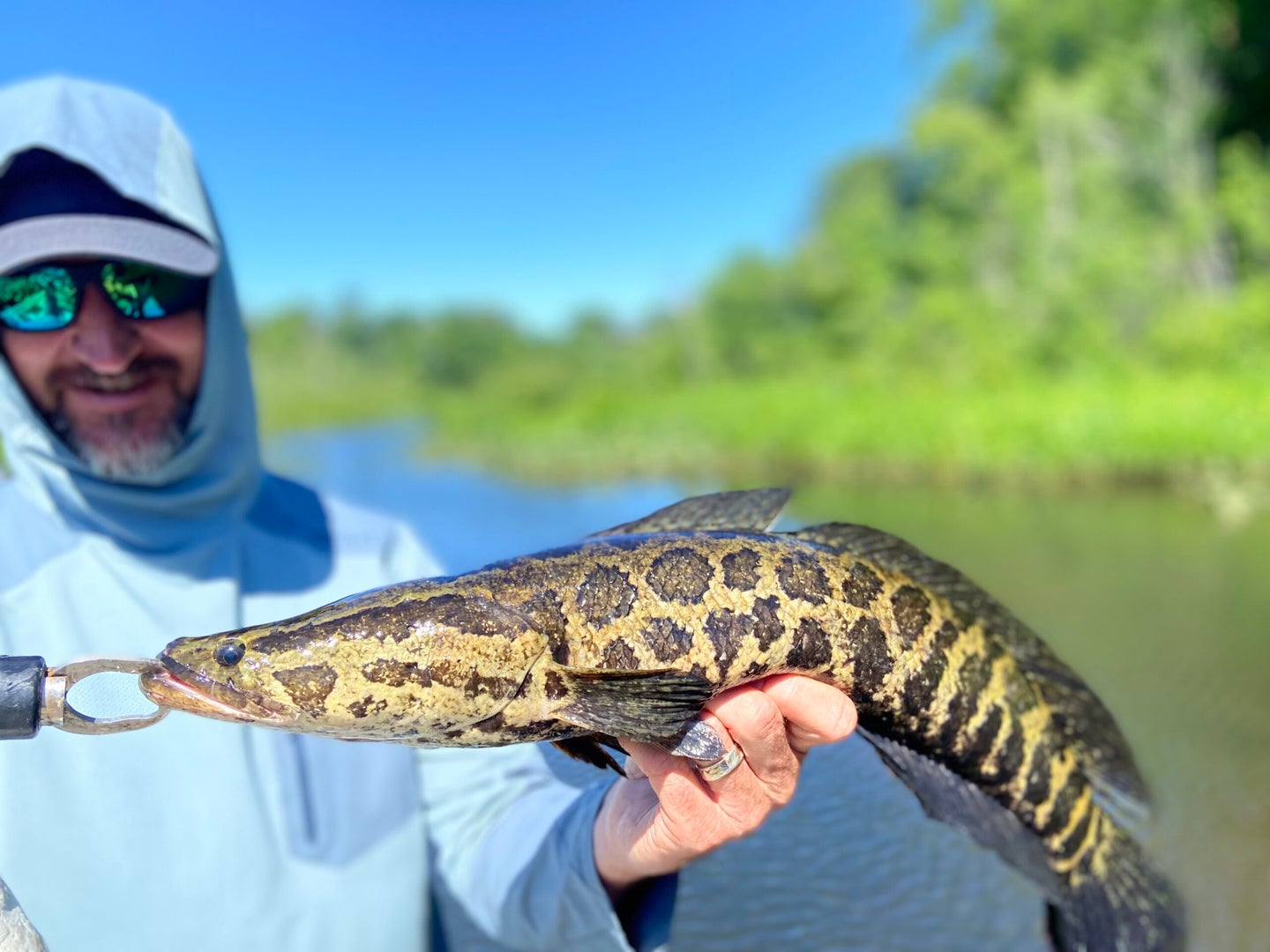Don’t Call Them Snakeheads in Maryland. They Are Now Chesapeake Channas

As long as invasive species—like northern snakeheads—are in our waters, you might as well have fun catching them. Joe Cermele
Maryland legislators hoping to control Northern snakehead numbers by encouraging more people to eat the invasive fish have succeeded in slapping a new menu-and-cookbook-friendly label on the toothy predator: Chesapeake Channa.
Maryland Senator Jack Bailey and co-sponsor J.B. Jennings introduced Senate Bill 207, “Natural Resources — Northern Snakehead — Common Name” in January. During a hearing calling for its passage, Bailey explained that “This bill seeks to encourage consumption of the snakehead and better manage its population by giving the snakehead a new name.” Todd Morgan, delegate for St. Mary’s Counties, pointed to successful rebranding campaigns that transformed the slimehead into the orange roughy, dolphinfish into mahi-mahi, and the Patagonian toothfish into Chilean sea bass as reasons to back the bill. “The crux of this is we have a public relations problem,” Morgan wrote. “Watermen want to catch these fish, restaurants want to sell them, and environmental experts want them gone. The big roadblock to all of this is the lack of consumer interest in eating the fish. It tastes great, makes delicious fillets, and is considered a delicacy in many parts of the world. However, most people can’t get past the name of the fish—nobody wants to eat a fish named the Snakehead!”
The first moniker Sen. Bailey proposed—Patuxent Fish—caused a backlash from devotees of the historic Patuxent River. Nearly 200 people signed a petition condemning the name for potentially stigmatizing the Patuxent by creating an impression that there is “something onerous or unsavory about the river” and its marine life. Riverkeeper Fred Tutman told WUSA TV that the Patuxent has great cultural significance to many Marylanders, and “to stigmatize it with an invasive outsider—a fish that doesn’t really belong here—that’s a little harsh.”
Bailey’s effort gained traction after he pivoted to the catchier “Chesapeake Channa,” and SB 207 passed both chambers in March and was approved by Gov. Wes Moore on May 9.
Channa refers to the snakehead’s scientific name, Channa argus. The species is considered an important food fish in its native range, which stretches throughout eastern Asia and includes parts of China, Korea, and Russia. It’s discovery in the United States in 2002—in a Crofton, Maryland, farm pond—led to widespread concern that the voracious predator would threaten the Chesapeake Bay ecosystem. Recreational fishermen and some chefs have embraced the hard-fighting fish, which is indeed excellent table fare. Now, Maryland lawmakers are hoping diners will join the battle—with a fork if not of a fishing rod.
The post Don’t Call Them Snakeheads in Maryland. They Are Now Chesapeake Channas appeared first on Field & Stream.
Articles may contain affiliate links which enable us to share in the revenue of any purchases made.
